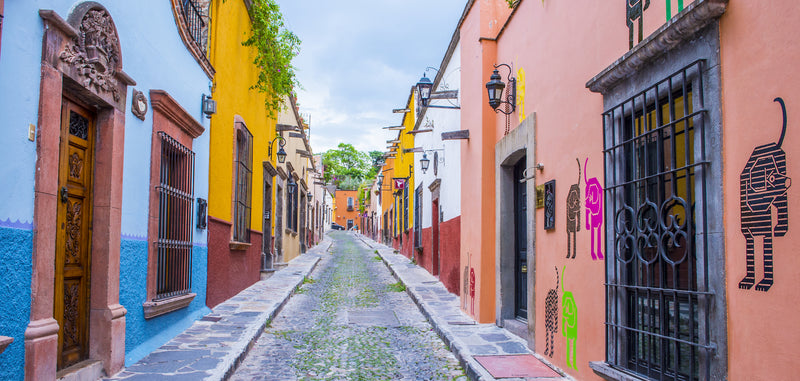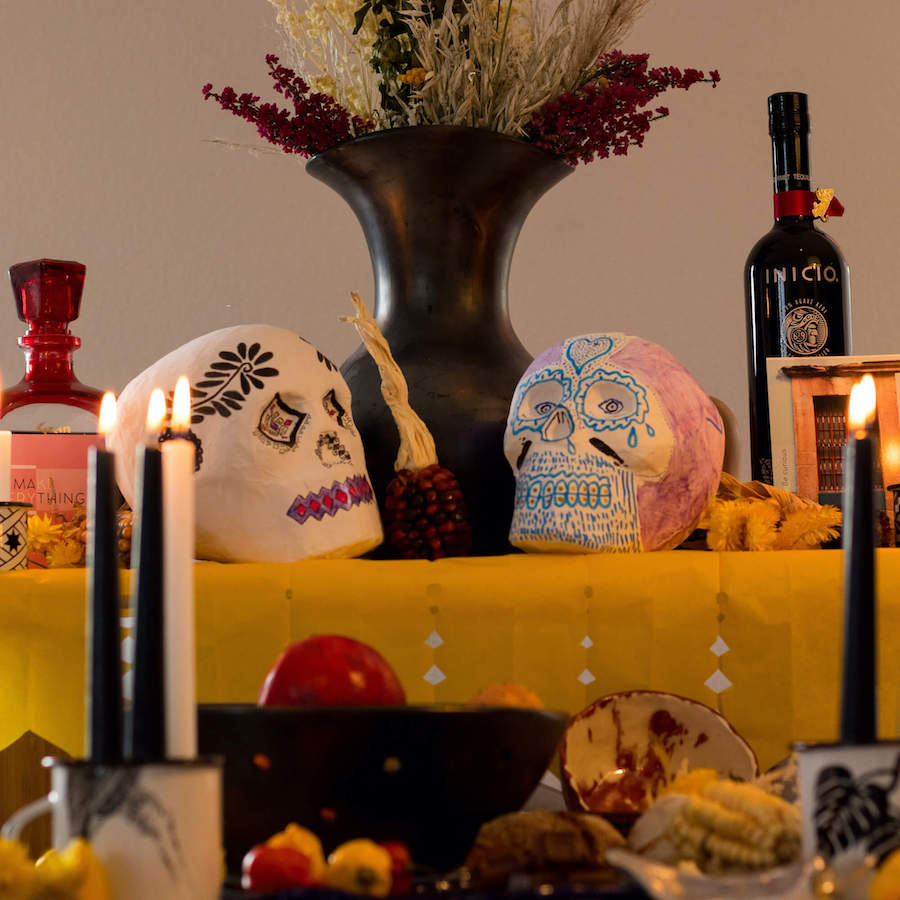The Day of the Dead: What is it Celebrating?
Every year as November approaches, our house starts getting dressed for my favorite Mexican traditional celebration: the Day of the Dead –In Spanish: Día de Muertos. It’s a unique celebration that fuses pre-Hispanic and Catholic traditions inherited with Spanish colonialization. The Day of the Dead is celebrated on November 2nd, although traditionally it starts Oct 28th.
Despite its name, the Día de Muertos is not focused on death, but is rather a celebration of LIFE! The colors and the general “spirit” of this tradition will quickly let you see it. Starting with the vibrant colors, and the beautiful flowers themed decorations. Even the Calaveras, decorative skulls, popularly referred to as “sugar skulls” are all decorated with flowers.
But what is the Day of the Dead actually celebrating then?
Well, in principle it’s a day of remembrance and honoring of our deceased ancestors, through prayer for their souls and a family celebration. It’s actually a large family and friends’ reunion, where stories of our ancestors’ lives are told, and their favorite foods are cooked. The celebration starts with a visit to their graves at the cemetery, and ends at home, with a shared meal and evening, where their souls are expected to come for an overnight visit, in spirit of course.

Every household sets up a special altar to honor their ancestors. On this altar memorabilia related to the dead members of the family or dear friends is displayed (photos, accessories such as watches, hats, specs, etc.). The Altar is beautifully decorated with flowers and a number of offerings and traditional symbolic items. The “offerings” (ofrendas) include food, drinks, a special Day of the Dead bread and other items that are part of this mix of traditions. Let me give you a bit of an explanation about the Altar of Ofrendas, as it will give you some important background to the Cempasúchil Flower craft I’m sharing with you today.
The Día de Muertos’ altar and ofrenda
A proper Día de Muertos Ofrenda is set-up on a multi-layer altar. It includes items that represent death and life, mainly through symbols of the 4 nature elements (earth, water, wind and fire) and the 4 cardinal points, placed as thanksgiving for giving us our sustenance for life.
For death: the Sugar Skulls. For life, the nature symbols: (1) earth: cooked food items, grains, seeds, fruits and flowers; (2) water: a glass or water jug is set-up, but also the favorite drinks of the dead spirits to visit; (3) wind: colorful paper (papel picado), incense of the Copal tree bark; (4) fire: candles and Cempasúchil (Marigold) flowers, symbol of the Sun. They are placed not only all over the graves and altar, but also in the shape of an arch either at the grave, the cemetery entrance, on top of the Altar and/or above the house main entrance door. Salt grains in the shape of a cross for the purification of the soul and refers to the 4 cardinal points (or the cross of Christ, depending whom you ask).

One particular belief inherited from the Nahua (Aztec) religious myths, and which is somewhat contradictory to Catholic beliefs of just honoring the dead, is that on this day the Spirits of our ancestors are able to leave the “realm of the dead” to join the living, and share a meal. Actually, the Aztecs celebrated the Dead festivities around August, and it was a month long.
I hope this inspired you to set up your own altar at home. If you are feeling creative, I have a blog about the meaning of the Cemasúchil flower (marigold) and how to make your own at home.
Feliz Día de los Muertos!
About our Author:
Marcela Rupli-Juin, Founder of ReCrearte Atelier
 Franco-Mexican Business Consultant during the week, artist and handy-crafts “workshoper” on weekends. She loves to share her Mexican cultural roots with friends and beyond, offering cultural evenings and workshops on topics such as Frida Kahlo, Mexican Muralism, Tequila, or the pre-Hispanic cultures. She does workshops for kids and adults on various crafts, mostly relating to Mexican traditions such as The Day of the Dead, Piñatas, Nativities, among many others. Avid reader, with a passion for Mexican culture and arts. She lives in Adliswil where she also has her Atelier “Recrearte” and her company “Cressentia”.
Franco-Mexican Business Consultant during the week, artist and handy-crafts “workshoper” on weekends. She loves to share her Mexican cultural roots with friends and beyond, offering cultural evenings and workshops on topics such as Frida Kahlo, Mexican Muralism, Tequila, or the pre-Hispanic cultures. She does workshops for kids and adults on various crafts, mostly relating to Mexican traditions such as The Day of the Dead, Piñatas, Nativities, among many others. Avid reader, with a passion for Mexican culture and arts. She lives in Adliswil where she also has her Atelier “Recrearte” and her company “Cressentia”.
Follow Marcela's creativity on social media: @Cressentia_atelier / Facebook: Cressentia Atelier



0 comments